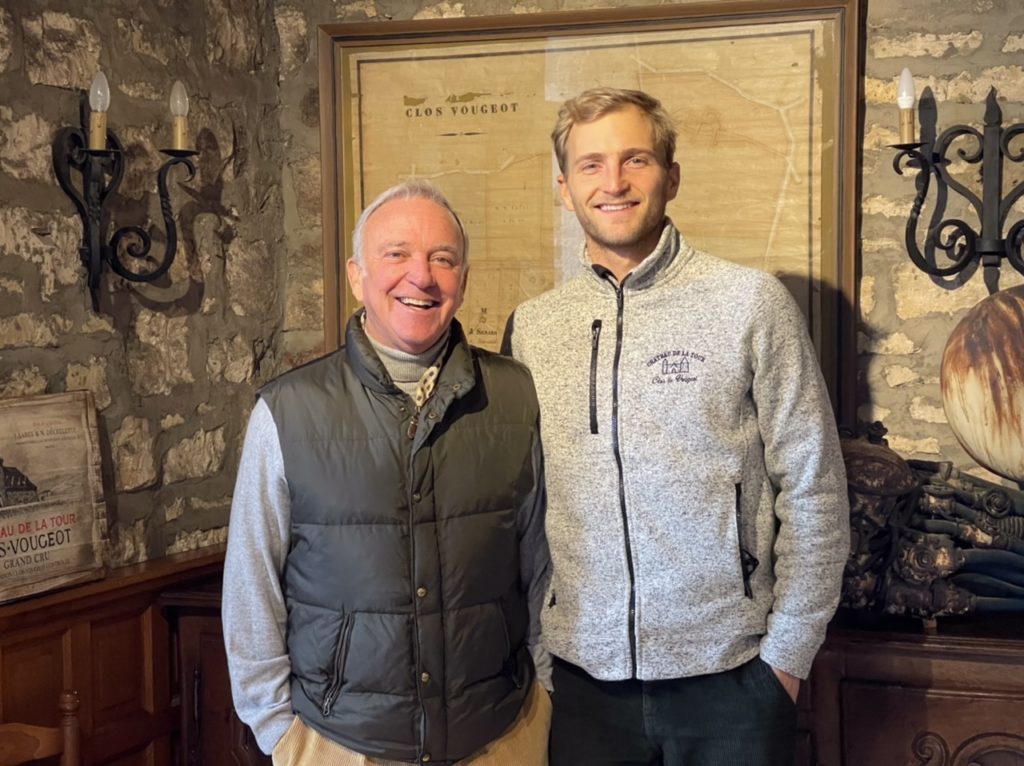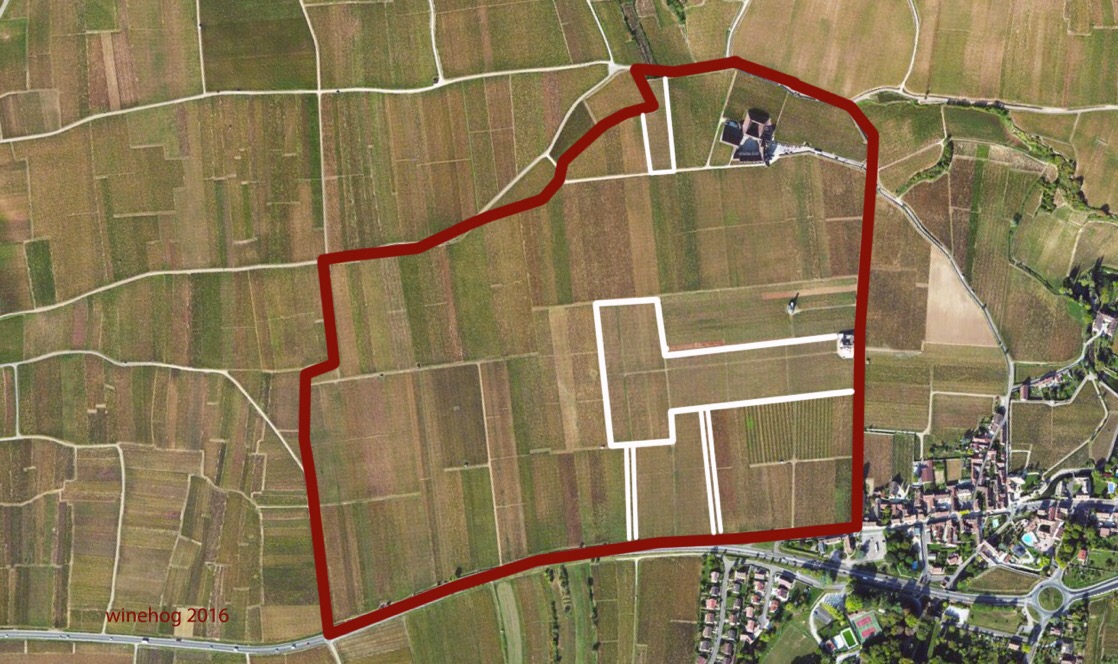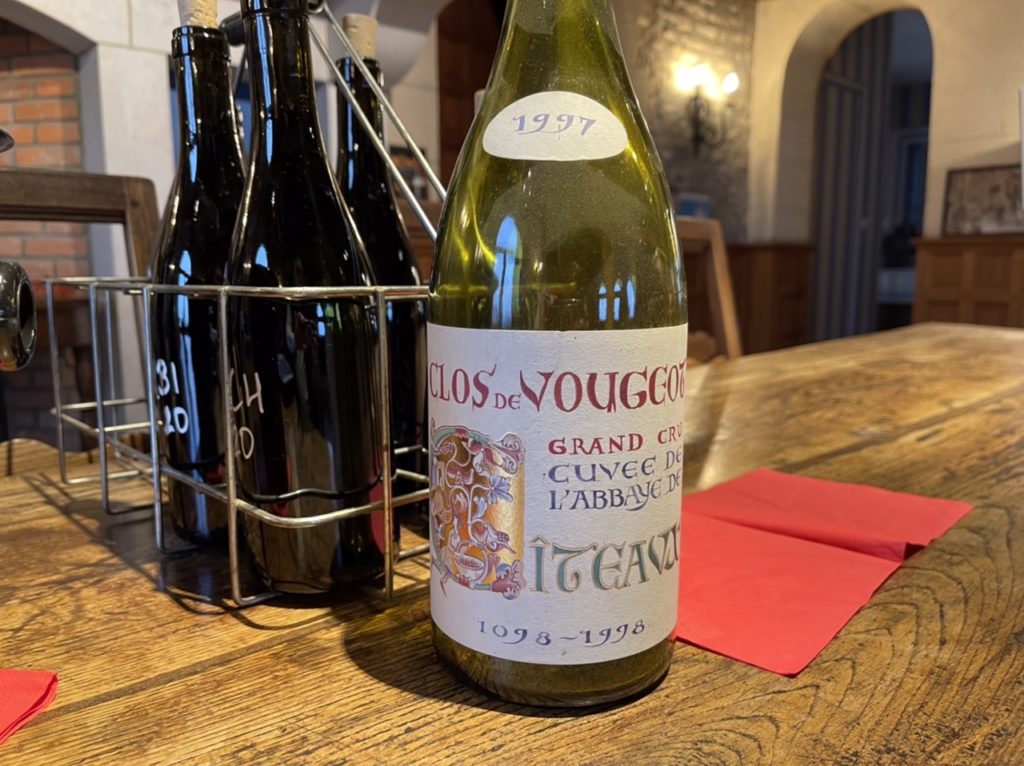It was quite a hot year in 2020 – yes, you’ve heard the story before. Yet somehow the big clos produced lovely wines in many cases.
I’m not sure that I yet understand the full implications of the 2020 vintage, as it offers wines from low 12% to beyond 16% of alcohol. There appears to be no full and proper explanation or logic.
I feared that the Chateau La Tour 2020s would end up on the weightier side; however they are a truly positive surprise, even revealing fine hedonistic qualities.

François Labet and his son Edouard made three surprising and, given the vintage, even light-footed Clos Vougeot in 2020. (To clarify: I use Clos de Vougeot for the place, and Clos Vougeot for the wine. It may not be logical, but at least I’m consistent.)
The rest of the Domaine Pierre Labet wines will be reviewed in a separate article.
Chateau de la Tour
Chateau de la Tour is the largest owner of Clos de Vougeot vineyards, with holdings in the center of this enormous grand cru.
François Labet makes three cuvées of Clos Vougeot – the Cuvée Classique, the Cuvée Vieilles Vignes, and in recent exceptional vintages, a top wine, the Cuvée Clos Vougeot Hommage a Jean Morin, has headed the line-up.
Chateau de la Tour – a key part of Clos de Vougeot history
Chateau de la Tour is located in the 19th-century castle just below the big, medieval Chateau du Clos de Vougeot. The de la Tour building was erected in 1890, and has been in the Labet family ever since.
It is connected to the main part of de la Tour’s vineyard vine holdings in the Clos de Vougeot (map below).

Chateau de la Tour owns 5.48 hectares of the clos, with the main section located below the Chateau Clos de Vougeot, oriented north to south, and connected to a 2-ha section in the very center of the vineyard. There are also two smaller plots at the bottom of the vineyard, and one at the top (recently replanted).
The history of the Chateau de la Tour holdings
Chateau de la Tour’s holdings have been in the family’s possession since 1889, making it one of the oldest of the current owners.
A Mr. Beaudet from Beaune acquired some of the vineyards from the estate of Jules Ouvrard in 1889, when the Clos de Vougeot was divided for the first time after being a monopole for several decades. Amongst the six original buyers were several large negociants, including Liger-Belair and Léonce Bocquet (who also bought the chateau).
Mr. Beaudet had a daughter who married Jean Morin of Nuits-Saint-Georges, and they took over her father’s holdings in the Clos de Vougeot. Jean Morin had two daughters, who married into the Labet and Déchelette families, thus introducing the Labet name into the estate. The Labet family had its own domaine in Beaune, and today François Labet is running both Domaine Pierre Labet and Chateau de la Tour.
Chateau de la Tour 2020 – the tasting notes
I was (as always) excited to taste the three cuvées of Clos Vougeot. The regular cuvée – Cuvée Classique – is made from younger vines which, in this case, are quite old, as the average vine age is around 70 years.
The cuvée Vieilles Vignes is made from vines older than 80 years. It should be noted that before the 2015 vintage, the Vieilles Vignes was made from one plot of old vines planted in 1910. Since 2015, it’s been made from old vines from all sections of the Labet holding.
Lastly, we have the Clos Vougeot Hommage a Jean Morin – also made from the oldest vines, but using only the first bunch on the fruiting cane closest to the rootstock, thus those most directly nourished by the vine. This is a cuvée invented by François Labet that adds both intensity and complexity to the already impressive Vieilles Vignes.

It’s too early to tell definitively, but I sense another level of elegance in the 2020s here, a certain lightness relative to the vintage’s sometimes rather dense expression. To put it bluntly, it seems they have taken their foot off the vinification gas slightly, both oak- and extraction-wise. This has clear benefits, at least hedonistically.
Chateau de la Tour Clos Vougeot Cuvée Classique 2020
The Cuvée Classique is surprisingly light-footed for such a big wine. It has all the concentration one would want; in 2020 it’s all about hiding the density rather than flashing it. Whole-cluster inclusion (50-60%) and new oak (40%) leave room for a floral and lively expression. It’s lively and perfumed, with quite some depth and complexity. This feels like it will be approachable within five-ten years, but it will of course keep longer than most of us will need.
(Drink from 2035) – Very Fine+ – (93-94p) – Tasted 15/12/2021 – ![]()
You need to login as a Premium subscriber to read the rest of this article. If you are not a Premium Subscriber, use the subscribe function and sign-up.

 - A true vin d’émotion – a Burgundy of passion
- A true vin d’émotion – a Burgundy of passion - A truly hedonistic wine – lively and enjoyable
- A truly hedonistic wine – lively and enjoyable - A vivacious wine for pure indulgance
- A vivacious wine for pure indulgance - A potential vin d´émotion - frais et léger
- A potential vin d´émotion - frais et léger
I enjoyed a great meal there in the Chateau with Pierre and his dad… a long time ago…